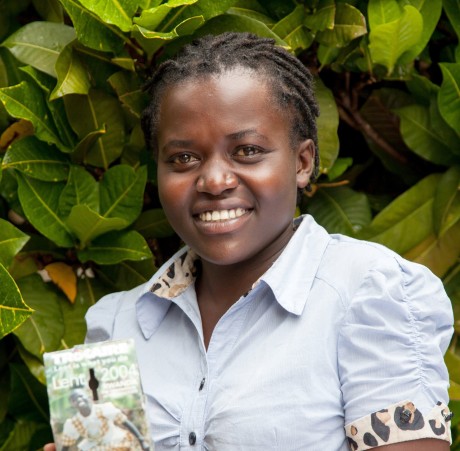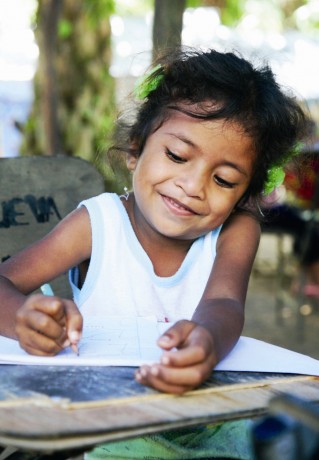
Josienne Umumarashavu (22) was just 12 when she appeared with her skipping rope on the 2004 Trocaire box under the heading ‘Rwanda: The Generation After Genocide’
ON THE 20th anniversary of the beginning of the Rwanda genocide, which began on the 7th April 1994, Trócaire has thanked the people of County Fermanagh for supporting its work to help survivors strengthen their livelihoods and rebuild peace in their communities in the last two decades.
Twenty years ago, when the genocide took place, church collections were held across Co Fermanagh, which helped Trócaire to raise IR£6m in its emergency appeal for Rwanda.
This was at the time, the largest public appeal in the organisation’s history.
“Trócaire established a presence in Rwanda to respond to the genocide and twenty years on, Trócaire is still working in the country thanks to support from people in Co Fermanagh,” said Éithne McNulty, Trócaire’s Director in Northern Ireland.
“Today, the organisation runs an agriculture programme that is helping people from poor rural areas to produce food and a governance and human rights programme that is building peace and reconciliation and improving people’s participation in local government.”
Eithne McNulty, who has visited Rwanda, said, “The Rwandan genocide was one of the bloodiest chapters of the 20th century. Not since World War II had people been murdered on such a scale and with such a speed. Over the course of just 100 days, approximately one million people were killed.”
People from Co Fermanagh also generously supported Trócaire’s Lenten Campaign in 2004, which was about the generation of young people living after the genocide.
Josienne Umumarashavu (22) was just 12 when she appeared with her skipping rope on the 2004 Trócaire box under the heading “Rwanda: The Generation After Genocide”. Her father, sister and two of her brothers had been killed. Trócaire supported her mother and remaining family after the genocide.
Today, Josienne is attending university and getting ready to graduate from a degree in accountancy thanks to support from people here.
“I still have a copy of the photograph and the Trócaire box in my home,” she said.
“It makes me very happy to look at it and to think that people in Ireland saw my photo and thought about life in Rwanda.”
Last year, over £830,000 was donated to Trocaire at Christmas, allowing the humanitarian agency to provide life-changing support.
FERMANAGH contributed £11,400 in ethical gifts as part of Trocaire’s Christmas season last year.










